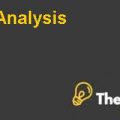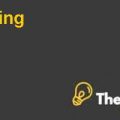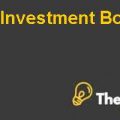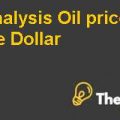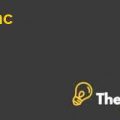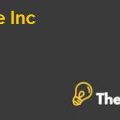
Objective
Based on both company's financial condition, it is possible to determine whether the merger will benefit both the company and its stockholders. In determining the decision about the merger, it is wise to put company's valuation into consideration, whether the merger will bring better value to the company or it is better to wait until the company gets better valuation based on its effort. To determine whether merger will benefit both the companies or not following procedure must by considered:
- Estimate the value of the YVC after merger with TSE International.
- Determine the minimum stock price to stockholders profit from merger.
- Give recommendation to YVC to do merger or not.
Analysis
In this part, we will describe the calculation about the value Yeast Valves and Control Inc. and TSE International before merger, also the value for both companies after merger. We use 4 methods to calculate the value, which is DCF (Discounted Cash Flow), P/E Ratio, Book Value and Market Value.
- a. DCF
In discounted cash flows valuation, the value of an asset is the present value of the expected cash flows on the asset, discounted back at a rate that reflects the riskiness of these cash flows. We will show the calculation for each company before and after the merger.
Table 1 is explaining any data that needed to use in calculation to get the value of the company that is shown in Table 2. This calculation involve some equation that use to get the growth and the terminal value. The equation that used is shown below.
Merger Valuation
Table 5 Merger Data 1
|
Yeats |
||
| Share | Price | P/S |
| 1.440.000 | $ 28,50 | 41.040,00 |
|
TSE |
||
| Share | Price | P/S |
| 62.694.361 |
$ 16,78 |
1.052.011,38 |
| Share | Price | P/S |
| 1.389.160,00 |
$ 20,00 |
27.783,20 |
| Long term debt |
119.000 |
9,60% |
| Equity: C/S |
1.093.051 |
88,16% |
| Equity: P/S |
27.783 |
2,24% |
| Total |
1.239.835 |
|
| rd |
9,60% |
|
From table 2, the value of YVC is $ 100,177.51. Meanwhile, from table 4, the value of TSE International is $ 4,802,578.92. And from the table 7, we can see that the value of the company after merger is $ 7,301,910.36. We can see that the value of company after merger is higher than the value from each company. It means that if both companies do the merger, it will create a good synergy. Because, as stated in the Modern Financial Management, “synergy occurs if the value of the combined firm after the merger is greater than the sum of the value of the acquiring firm and also greater than the value of the acquired firm before the merger”.
Weakness of DCF
- The DCF model is only as good as its input assumptions
- Valuations are particularly sensitive to assumptions about perpetuity growth rates and discount rates
- DCF focuses on long-term values
- Overlook unusual opportunities
- b. P/E Ratio
The P/E ratio reflects the amount that investors are willing to pay for each dollar of earnings. The average P/E ratio in a particular industry can be used a guide to a firm’s value – if it is assumed that investors value the earnings of that firm in the same way they do the “average” firm in the industry. The price/earnings multiple approach is a popular technique used to estimate the firm’s share value; it is calculated by multiplying the firm’s expected EPS by the average P/E ratio for the industry.
Table 8 EPS and PER for Yeats and TSE
|
EPS of Yeats |
P/E in the Industrial Machinery Sector |
EPS of TSE |
P/E in the Industrial Machinery Sector |
|
|
3.87 |
8.2 |
2.23 |
8.2 |
|
|
10.3 |
10.3 |
|||
|
11 |
11 |
|||
|
14.6 |
14.6 |
|||
|
16.3 |
16.3 |
|||
|
7 |
7 |
|||
|
10.7 |
10.7 |
|||
|
10.4 |
10.4 |
|||
|
Average P/E |
11.063 |
Average P/E |
11.063 |
|
|
Value per share for Yeats |
42.812 |
Value per share for TSE |
24.669 |
From table above, we can see that Yeats’s PER is higher than TSE’s.
- c. Book Value
To calculate book value per share, we used the following formula.
Book Value per share =
Table 9 Book Value per Share Yeats and TSE
|
|
Yeats |
TSE |
| Total Assets |
$ 42,124,000 |
$ 1,245,825,000 |
| Total Liabilities |
$ 5,360,000 |
$ 350,088,000 |
| Total Shares Outstanding |
$ 1,440,000 |
$ 62,694,361 |
| Book Value per share |
$ 25.53 |
$ 14.29 |
From table 9, we can see that the book value per share from the Yeats is higher than TSE’s.......................
This is just a sample partial case solution. Please place the order on the website to order your own originally done case solution.
Located in May 2000, these cases reflect individual perspectives leaders as they approach the negotiations to acquire TSE International Yates valves. The task for the student is to complete the evaluation and analysis of the target buyer and negotiate the price and exchange ratio with contractors. Each case contains financial forecasts only on the side, so an important part in the negotiations is to get other's confidential information, analyze it, and to successfully negotiate a purchase. Cases are relatively simple, and offer as the first exercise in the assessment of the company, and approval of purchase. They can be taught separately in the usual case, the discussion of fashion, or combined into a joint coordination exercise where students assigned parts to play. Used in bilateral negotiations exercises, two teams of students identified, each team representing one of the parties to the negotiations and obtaining case designed for this team. Bargaining exercise provides a special opportunity for shared learning among teachers in the areas of finance, strategy, human behavior, and negotiation.
This Darden study. "Hide
by Robert F. Bruner and Sean Carr Source: Darden School of Business 16 pages. Publication Date: March 22, 2002. Prod. #: UV0094-PDF-ENG


